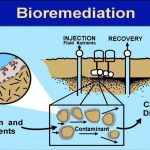What is Bioremediation?
Bioremediation, in simple terms, is the use of microorganisms to degrade contaminants that pose environmental and human risks. The concept and use of bioremediation come from the unique abilities microorganisms have for metabolization, allowing them to survive and thrive in just about every place on earth and within a significant range of conditions. This means microbiology can be applied to multiple uses, ranging from decaffeinating waste water to containing oil spill contamination.
Microorganisms Used in Bioremediation: Pseudomonas putida
One common microorganism used for this kind of biotechnology is called the Pseudomonas putida (P. putida). You could say that the P. putida is “addicted to caffeine” because its main use in bioremediation is decaffeination.
Commonly found in coffee fields and waste water, the P. putida can decaffeinate coffee and tea waste, remediate all kinds of waste water and even decaffeinate actual foods and drinks. P. putida also has other nifty tricks: It’s been found to remediate naphthalene-contaminated soils and even has been tested in laboratories to convert styrene oil into PHA, a biodegradable plastic.
Microorganisms Used in Bioremediation: Alcanivorax borkumensis
Also known as the “oil degrader,” the Alcanivorax borkumensis (A. borkumensis) is one of the most important microorganisms for bioremediation. Able to remediate oil contamination in aquatic environments, A. borkumensis lessens environmental impact from oil spills and contaminations.
The use of A. borkumensis removes a considerable amount of petroleum from water, but some challenges exist. Using A. borkumensis is much easier at the shore due to dispersal in the ocean. This microorganism is a relatively new discovery, but future research will reveal its full potential and its ability to clean petroleum from water systems.
The Future of Bioremediation
Why is bioremediation so important? The ability to employ microorganisms that use contaminants for “food” has the potential to play a role in reducing environmental damage. Scientists are just beginning to understand the capability of these microorganisms and how best to effectively use them. With so many biotechnological tools available, it may one day be possible to tweak a microorganism’s diet for use in a particular bioremediation event. Microbial bioremediation promises to be an exciting area of research for decades to come.


